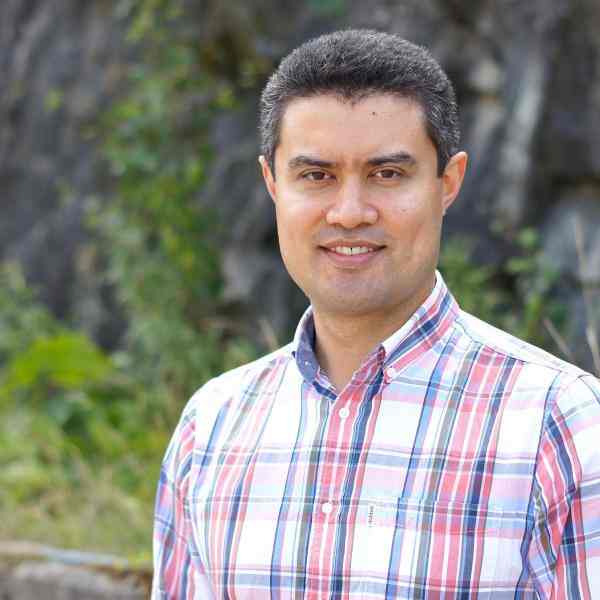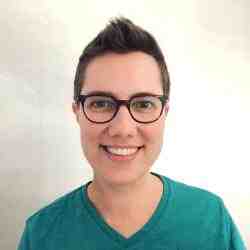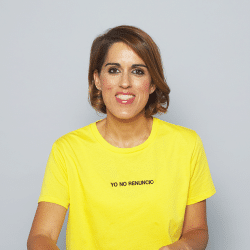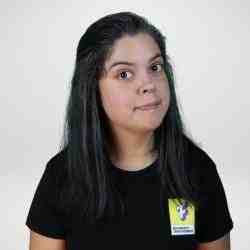Introduction
Shifo’s MyChild solutions are designed with and for frontline workers, enabling them to easily track individual children and entire communities’ immunization records and preventive health needs over time, which is currently used by over 600 health service delivery points across Afghanistan, Uganda and Gambia. Shifo’s approach is to unite and create trustworthy relationships between key actors to solve the gaps that stop us from reaching every child, including families, health workers, local and national decision-makers, global NGO:s and foundations.
The New Idea
Rustam Nabiev, an expert mobile tech engineer turned health specialist, is creating tools needed by nurses, families, policy- and decision makers in low-income countries to ensure that every child receives essential preventive health care. Rustam’s MyChild solutions are designed with and for frontline workers, enabling them to easily track individual children and entire communities’ immunization records and preventive health needs over time.
Rustam found that adoption of existing digital health record solutions has been unsuccessful because top-down solutions fail to meet the actual needs of local practitioners. Seeing this failure, Rustam founded Shifo to enable frontline workers to easily track individual children’s health development and empower families and communities to participate in the process. MyChild currently takes two forms: the MyChild System can be used on tablets, computers or smartphones while the MyChild Card connects physical health records booklets with the same software technology, enabling the inclusion of the most rural and undeveloped areas. Both solutions aim to “push” information to nurses and families, creating a simple, aspirational tool, which facilitates the work, rather than increasing the administrative burden.
Rustam’s strategy is at its core behavioral – aiming to generate a higher demand for eHealth tools on the ground while increasing the uptake and usage of reliable, transparent health data. He believes effective data capturing is essential for successful healthcare delivery, particularly in the most under-resourced settings. Apart from being cost saving, they also provide a wealth of data to unleash regional and local teams’ ability to problem-solve, innovate, and drive significant improvements in the system. Throughout, Rustam and his team design MyChild in a way that allows it to be adopted by and influence the wider health care system, ensuring, for example, that it will integrate effectively with other digital platforms and a national records systems once the ecosystem is ready for it.
Shifo has worked strategically to achieve full uptake of the MyChild System in 48 clinics, and works on the ground to drive improved health outcomes. To date, more than 50 000 children have received unique IDs and more than 10 000 have been fully immunized. Rustam is currently piloting MyChild Card at two clinics in Uganda to demonstrate its effectiveness before scaling up into other areas. The goal is to scale MyChild System to 25 countries by 2020 in order to reach 20 million children, followed by one billion children by 2030, starting in Uganda, Gambia and Afghanistan.
The Problem
Today millions of children in low-income countries die or suffer from preventable diseases like polio, measles, tuberculosis and pneumonia. Every year about 7.5 million children under five years die from these diseases, 70% of them live in ten countries in Sub-Sahara Africa and South Asia. The current preventive healthcare system is failing despite decades of international efforts, with under-vaccination causing the preventable death of 1.5 million people every year. A first step in reducing under-five deaths is ensuring that all children access preventive health care services and receive proper registration. According to UNICEF, more than half of the world’s children are not registered at birth and up to 70% of children lack registration in sub-Saharan Africa.
Globally, one in five children are under-vaccinated, leading to 20% of all under-five deaths. Global immunization coverage has, however, increased from 73% in 2000 to 86% in 2014, which represents an increase of approximately 10 million immunized children. Nevertheless, issues in equality in access
and coverage remain. The main strategic objectives of many global health efforts are to reach “the last fifth,” or the hardest-to-reach children. The particularly vulnerable are children born in remote areas far from the nearest public health center and those getting the first dose of a vaccine without receive the follow up doses. One reason for this is the lack of systematic follow up from the health care centers. In many low-income countries health records remains fully paper-based and can often be disjointed, increasing the risk for records being lost and thus disease immunity nearly impossible to ensure. The likelihood for receiving full immunization also decreases when health education is lacking, families are fully in charge of keeping track of the next health visit, centers are stocked out with vaccine and there is a lack of trust in the health system’s efficacy. The current system creates a burdensome logging system for health workers, rather than a helpful tool. Files are often left to gather dust and periodically inform ministry of health audits.
To tackle these inefficiencies, local authorities have tried implementing digital record systems in the past to enable registration and follow up, but these top-down systems have not been adapted to the working reality of nurses and outreach staff, meaning they have failed to change health workers’ behavior within the system. The current situation leads to an inherent lack of transparency and reliable data in the health care chain. This disempowers local health care workers, policy- and decision makers to make appropriate interventions, decisions and allocate budget to prevent stock outs.
The Strategy
Rustam’s ultimate aim is for no child to die unnecessarily from preventable diseases. He founded Shifo with a mission to use the power of data and technology to drive improvements in health care delivery, accountability, and transparency. Shifo’s approach is to unite and create trustworthy relationships between key actors to solve the gaps that stop us from reaching every child, including families, health workers, local and national decision-makers, global NGO:s and foundations. In order to reach this aim, Rustam’s strategy is built on three parts: Firstly, Shifo is designing the tools, systems and structures needed to make preventive healthcare accessible to all. Secondly, Rustam wants to create a behavioral change towards a wider use of eHealth tools and digital systems by demonstrating concrete benefits to these key stakeholders. Lastly, Shifo takes the role as a data broker in the wider health community to promote data transparency.
At the center of Shifo’s work is MyChild System which helpful features designed with and for nurses, drive uptake of the tools by nurses and doctors alike. It currently takes two forms: the MyChild System, a digital tool, and the MyChild Card, a physical paper based health record
booklet, which uploads each child’s health record to the same secure system for digitalization through a scanner. Since most regional hospitals are equipped with the infrastructure required for the system to work (such as electricity, computers and security), these places are used as collection
hubs for the cards. Because it does not rely on electricity or network coverage during care delivery, MyChild Card can be implemented in rural settings, in areas without power supply, or in uncertain security environments. This solution makes it possible to not only reach the “last fifth”, but also
empowers families to take more responsibility for their child’s health care as the booklet includes educational material and the system itself allow for more time spent between the nurse and family to learn about their child’s development. In case the family loses the card booklet, a new one can easily be replaced through the unique ID-number holding access to the history of each child’s medical status. An SMS system is also integrated to alert mothers and families about upcoming clinic visits that seek to promote a higher turn-up rate. During each health check, the nurse registers any allergies, HIV status, growth chart, and vaccines or vitamin doses given to the child. The idea is that MyChild generates not only indicators on the number of children missing their vaccines, but also on the reasons why they are missing them. To date, the system gathers 63 other types of indicators, to show the gaps and guide actions to close them. It is also designed to send updated lists to the nurses, village health teams in centers and the outreach areas, notifying them which children in their area need to visit the center for follow up vaccinations.
Another key element of Rustam’s strategy is to drive behavioral change on two levels. First and foremost, he seeks to trigger a higher demand for eHealth solutions among health workers and professionals in low-income countries at large, while laying the foundation for integrating the system to other digital record keeping systems once a nation’s health system is ready for it. MyChild doesn’t aspire to be the most complex or cutting-edge technology, but has been built for and by local health workers and professionals from the very start in order to make it as flexible and effective as possible for end-users. In order to use the MyChild System however, nurses undergo required IT-training and are certified users. For most nurses, it is their first time using a computer or tablet, but Rustam has found that old and young alike are eager to get online, and see this as an exciting and beneficial personal learning opportunity. Even for areas using the MyChild Card, which does not require the same training, Rustam believes the health workers gain better understanding and acceptance for digital eHealth tools when indirectly exposed to the benefits from digitalisation. On the other hand, Rustam wants to encourage a higher supply and smarter usage of reliable health data. To further promote effectiveness and accountability on a decision-making level, MyChild sends report to the local government and policy makers to identify problems in the local health service chain: vaccination rates, nutrition status, stock outs, unavailable nurses or failed outreach for example. This enables them to directly identify the gaps in health service delivery, improve coordination and workflow, and empower field partners to improve effectiveness and reach of health services delivered to its citizens. This feedback also enables local health care workers to identify gaps in their daily health service delivery and thus catalyze a culture of local problem solving.
The final part of Shifo’s strategy is to become a data broker to convince the global community and partners that the identified gaps are significant and relevant – as well as delivering the means to fill these gaps. Rustam has seen there is potential for some push-back against his system, as its level of
accuracy and transparency is highlighting entrenched problems which the existing system cannot mask. For example, MyChild is exposing that actual vaccination completion rates are much lower than WHO estimates. Rustam’s careful messaging makes it clear that it is only total transparency that will best serve the health system. There are also challenges that local health centers will not be
able to solve in isolation. Rustam is already working with reputable civil society organizations, development cooperation partners and funding agencies in creating an eco-system of players in the field that work towards the same goals – covering the gaps in the public health care chain.
Shifo’s business model is based on a gradual country co-financing model for sustainability and exit strategy, where the costs for implementing and operating MyChild are divided between Shifo, NGO:s and local governments. In order to secure sustainability and longevity, Rustam is implementing incremental handovers of the model and platform to local governments and health providers over a 6-years period. Rustam believes this will be sufficient time to ensure the system is self-sustained in both operations and maintenance by local health services and governments, by proving the overall cost-savings of this model compared to the current fragmented and inefficient monitoring systems carried out by health ministries. All in all Shifo finance 25% of the total cost for implementing and operating MyChild over this initial 6-year period. They intend to cover the costs through a combination of building strategic business partnerships and securing financial support from development collaboration partners, crowd funding, philanthropists and angel investors.
To enable the spread of Shifo’s model to 25 countries by 2020, they are currently building a coalition of organizations and corporate partners. Rustam is involving them by demonstrating how data-driven and effective healthcare ties into their current priorities. Respected NGOs have already committed to co-financing the external funding required for rolling of MyChild to new geographies, with PLAN highlighting Shifo as best practice and a priority for all its international offices and ActionAid planning to lead its rollout in Gambia. The Swedish Committee for Afghanistan plays the same role in Afghanistan – which is seen as a gateway to Pakistan and India. The value for these NGO’s is to accelerate achievement of UN 2030 Sustainable Development (SDG) Goals, to access reliable data for monitoring the process of their intervention and assess their investments using transparent data. To keep up with the pace set out by the new SDG:s, with the goal to end all preventative deaths among children aged 0-5, Rustam’s ambition is to reach out to 1 billion children by 2030.
The Person
Rustam was born in Tajikistan into a family of doctors. Just after the Soviet independence in 1992, the country was thrown into civil war. Rustam’s family was forced to leave their privileged life in the capital and seek refuge in the rural north of the country. The family subsisted on humanitarian aid for several years. Rustam experienced firsthand the flaws in the system: the humanitarian aid, including essential food supplements, was sold at markets, which prevented many of those most in need from gaining access. Rustam started helping his parents to provide for the family – cleaning cars and selling scraps. He gathered glass bottles and sold them to families door to door. He quickly realized that this was an ineffective method and thus organized young people in the community to extend the reach to neighboring villages.
After the civil war, Rustam began his studies in computer science, which he felt would position him for a future of innovation and problem solving. After a University exchange and working as an IT consultant in Germany, he moved to Sweden to study and specialized in how to build mobile infrastructure. He was the youngest in his class and had 10 years of working experience.
After learning about eHealth and the opportunities of telemedicine from his studies in mobile infrastructure, he chose to write his thesis on the subject in 2002. In his project, Rustam developed an IT system to monitor the at-home equipment of 20,000 people with breathing difficulties. He spent a great deal of time talking to patients, bio-engineers, and doctors to create the innovation
that made most sense for the user and provided relevant data to the deliverer of the equipment. It was at this point that Rustam decided to devote his life to health care and innovative eHealth solutions. Rustam began work with Karolinska Institutet and worked in a global context managing eHealth projects that strengthened health service delivery in Sweden, Europe, Asia and Africa. He also coached students working with eHealth projects at the University, and evaluated eHealth tools that increased efficiency and accountability in home health service delivery. This led to a key insight: how could applying insights and innovations from the Swedish public health care system improve systems in under-resourced contexts?
Influenced by his childhood, upbringing, and work in Europe, he found his driving force. In 2009, a delegation invited Rustam to Uganda to understand how eHealth can improve healthcare in an African context. He went to research the setting, and remained for months at a time to deeply understand the health care system, the nurses pains and gains and how local policy makers worked to improve and create a more far-reaching public health care system. During his time in Uganda – Rustam came to understand the root causes of the problems with delivering preventive health care services for children and possible ways to fill these gaps.
After his time in Uganda, Rustam started working on developing Shifo on weekends, evenings and vacations. Recognizing the need for organizational independence, after several months he quit his work at Karolinska Institutet and pursued his full time journey with Shifo.




